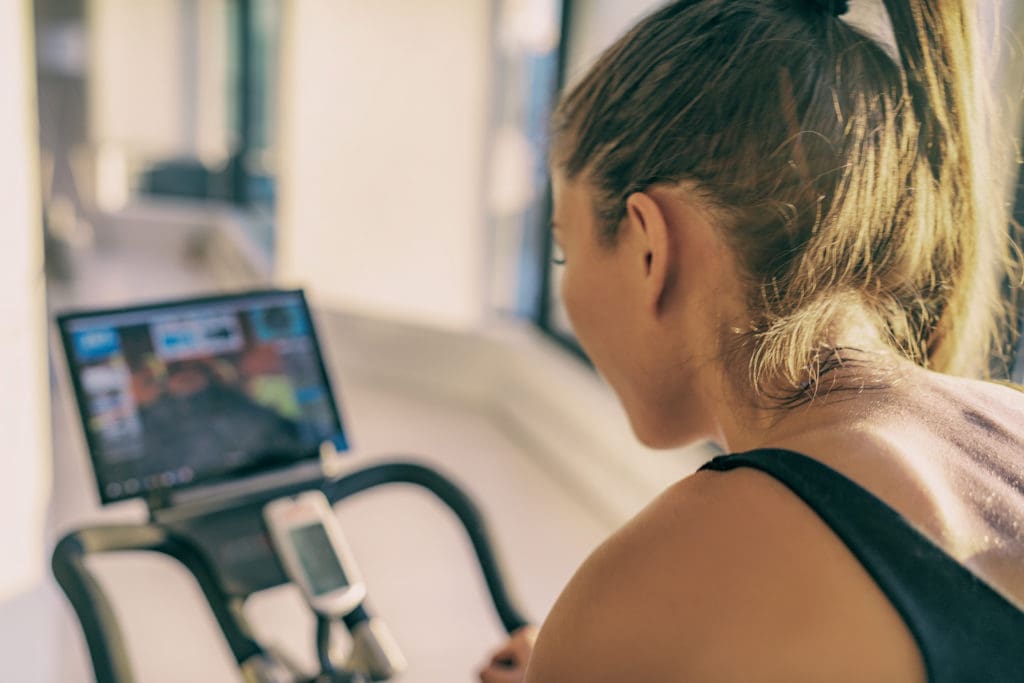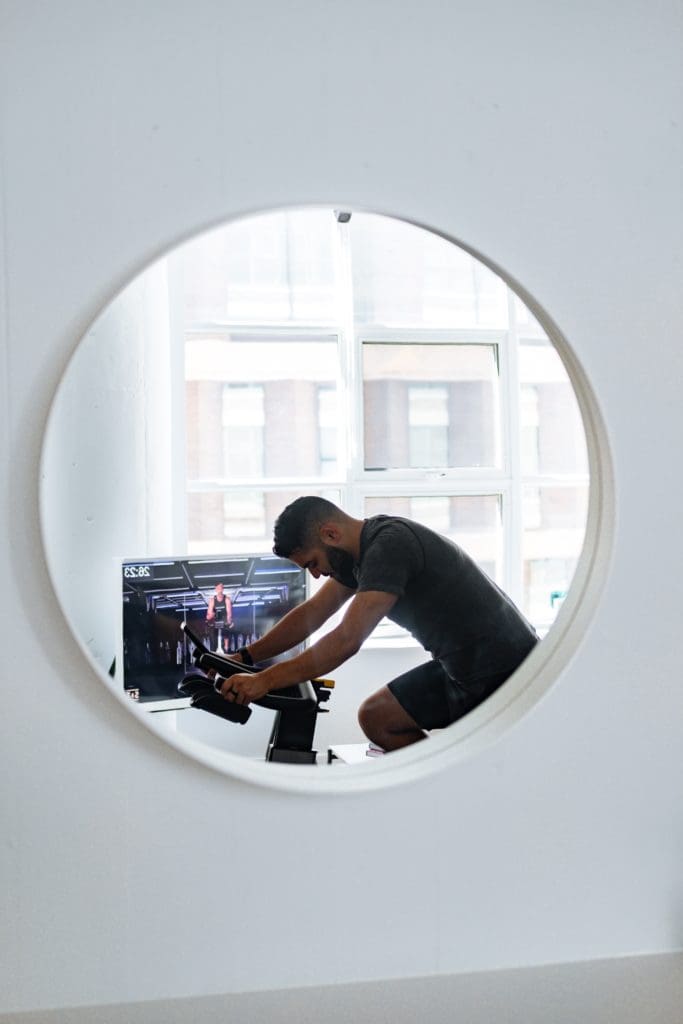Riding the Cycling Craze? Read This Before Your Next Class!
Experts Share the Pros, Cons, and Common Injuries Associated with Indoor Cycling

The COVID-19 pandemic caused many gyms to close in March, and many remain closed still. As a result, it seems like more people than ever hopped onto the indoor cycling trend in 2020. Just look at luxury brand Peloton’s sales explosion – by November their sales had jumped 232% over the previous year!
Since so many people are either trying indoor cycling for the first time or are doing it more frequently in their homes, we wanted to share with you some pros and cons of at-home cycling, along with some common injuries from cycling we see in the clinic – and how to avoid them.
The Pros
The number one benefit of purchasing an indoor cycling bike is the most obvious one – you can do it at home on your schedule. No more racing to get to your spin class early so you don’t get stuck in back next to the person who forgot to put on deodorant.
Many of the stationary bikes, Peloton included, offer classes that are included in a monthly subscription that tends to equal in price to a gym membership at around $30-40 per month. Some of the classes also involve fitness programs, weightlifting classes and exercises other than cycling, which is great if you are interested in cross-training.
Some of the other pros:
- Motivation from an instructor
- Supportive and fun community
- Scorch those calories in intense classes
- Increased muscular endurance
- Improved cardiovascular health
- Cycling is low-impact, meaning there is minimal impact on the hip, knee, and ankle joints
- Decreased stress levels
The Cons:
The biggest downside to at-home cycling is that it can be cost-prohibitive. A Peloton bike will typically run over $1,800, and that doesn’t include the monthly subscription. Quite an investment to sweat on your own in your bonus room…
Another problem with purchasing an expensive stationary bike is that sometimes people use it as their only form of exercise and don’t cross-train. If you cycle nearly every day, you’re putting yourself at risk for an overuse injury and neglecting other muscles that deserve development for well-rounded body fitness.
Other cons include:
- Without a subscription, indoor cycling can be monotonous
- You don’t receive the benefits from training outside, like fresh air and vitamin D from sunshine
Common Injuries & How to Prevent Them
 Knee Injuries
Knee Injuries
Even though cycling is low impact, you can still injure your knee if your intensity or frequency is too high, or especially if you’re using incorrect form. The great thing about taking classes in person is that an instructor adjusts the seat for you and checks your form.
The most common type of knee pain? “Cyclist’s knee,” or patellofemoral pain syndrome (PFPS), a condition in which the cartilage under the knee is damaged due to injury or overuse. This can be caused by a dramatic increase in intensity, frequency, and/or duration, and can also be affected by improper technique and footwear. This is especially common in beginners who try to do too much too soon. It is typically signified by pain in your knee occuring when bending or putting weight on your leg, and cracking or popping sounds when bending your knee.
To prevent PFPS, make sure you’re not increasing your intensity, frequency, and/or duration too much week–to–week. Instead, try to increase these things gradually over the course of a few months. Make sure the seat is about hip level when you’re standing next to the bike, with your knee aligned with the center of the pedal. While cycling, you should have a 30-degree bend in your knee on the downstroke. Knee strengthening exercises will also help to prevent PFPS.
Back and Shoulder Pain
Back and shoulder pain are incredibly common in cyclists due to bad posture, especially for those who sit all day at a desk and then sit on the bike. It’s very common to sit hunched over toward the handles, tensing your shoulders, which will strain your back muscles.
To prevent back and shoulder pain, ensure you have correct posture during your workouts and during your day. If you spend all day sitting and hunched over, your chest muscles are likely tight and your upper back muscles are likely weak. Strengthening your upper back and stretching your chest can help to improve your posture, as can using a towel or device for lumbar support while seated. Back pain can also be caused by a weak core, so focus on increasing your core strength by doing moves like planks.
Wrist Pain
Wrist pain has also become very common in the general population as a result of typing at a computer with improper form. Cycling can make the pain worse by putting too much pressure on your wrists while cycling. Your arms should be doing much more work than your wrists.
To prevent wrist pain, keep your wrists straight (even if you need a brace) and don’t lean forward too much. Your arms should be extended with a slight bend in the elbows – try not to lock your arms out, as that can create shoulder, neck and back problems.
Neck Pain
Even people who have good form everywhere else tend to forget about their necks. This isn’t just the case for indoor cycling; weightlifters often strain their necks (especially when they’re trying to watch themselves in a mirror). A lot of us are unknowingly in a position of “forward head” or “text neck” when we are reaching our necks forward to look at a cell phone or computer screen. This position is common in cycling as you’re leaning forward and sometimes watching a class on a screen. This position can aggravate the neck and pinch the nerves, which will cause pain and stiffness over time.
To prevent neck pain, you want to make sure your spine is in proper position and that your neck is in line with your spine. Keeping your chin tucked can help to keep it in line. If you feel yourself starting to experience neck pain and stiffness, regular chin tucks (pulling your head into your spine and your chin into your neck) can alleviate the pain and create space in your neck vertebrae, which will prevent issues in the future. It’s also very beneficial to stretch your knee beforehand and during more relaxed parts of the ride to avoid getting a stiff neck.
As always, physical therapists are the musculoskeletal experts who can help prevent and treat pain caused by indoor cycling. If you’re looking to start an exercise program, the best place to start is a physical therapy evaluation. A physical therapist can tell you exactly what muscles are weak or tight and give you exercises and stretches to prevent injuries and maximize your workouts. If you start feeling pain or issues in your joints, see a PT before it becomes a bigger issue. Remember, you can likely see a physical therapist without a doctor’s referral!
